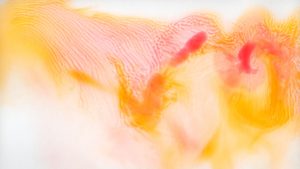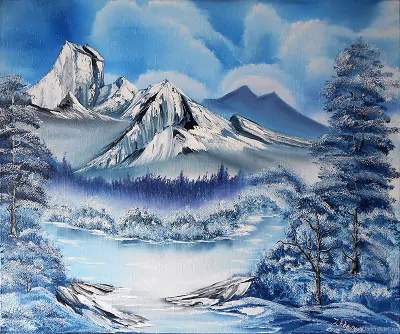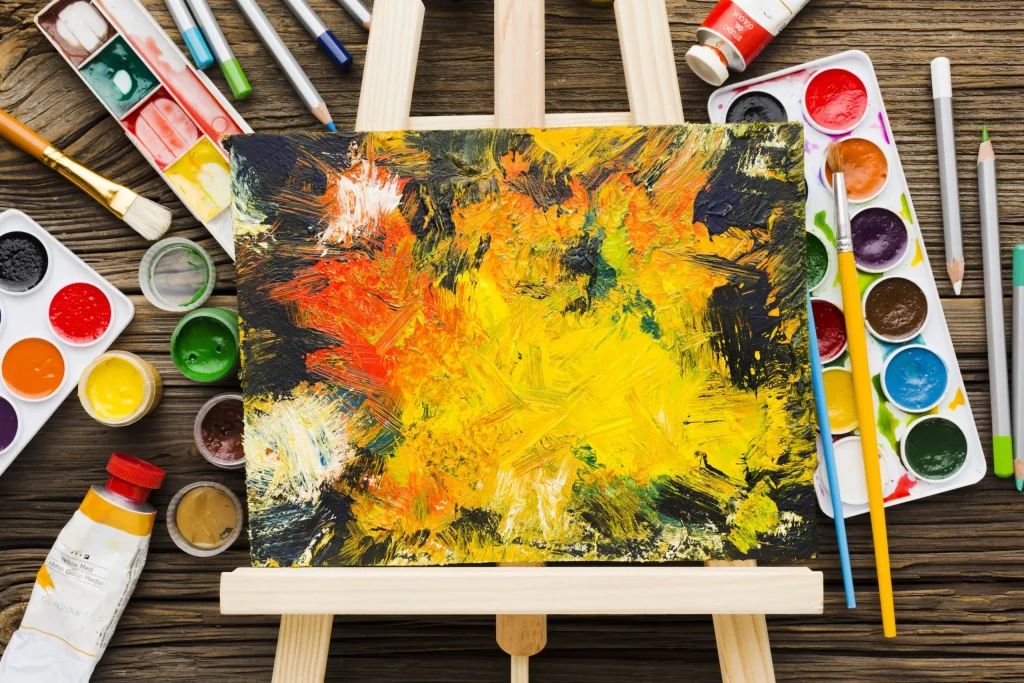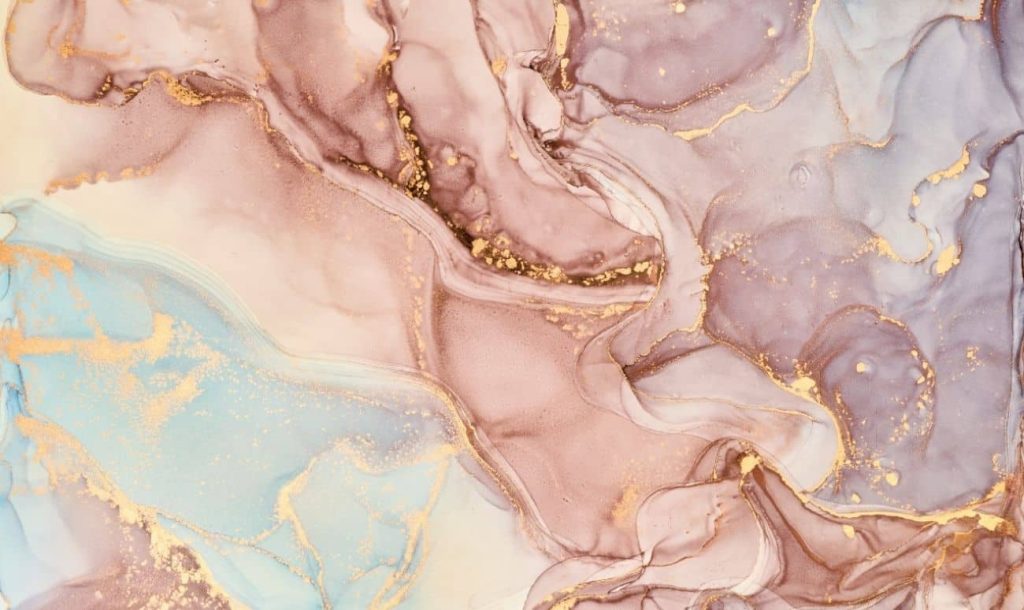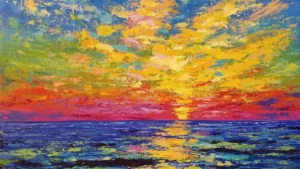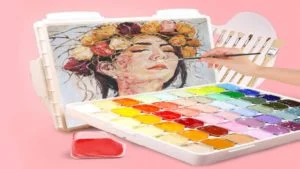If you’ve ever attempted watercolour painting (or even looked into it), you’ve almost certainly come across the term gouache. It’s a pigment that, like watercolour, blends with water to spread across paper, canvas, or any other surface.
Gouache is often referred to as a “opaque watercolour,” a children’s poster paint, or a supplementary medium to be utilised alongside more well-known methods due to its lack of popularity.
For decades, this medium has been in use for layouts, concepts, and backdrops in the film and animation industries. You may layer it light to dark or dark to light, and unlike watercolour, you don’t have to block out the whites. It can be relatively affordable, and it does not require a large or sophisticated setup to be successful. Overall, it’s one of the most effective and underappreciated media available.
Continue reading to learn everything you need to know about this strong medium, why you should start employing its unique creative qualities to your artistic advantage, and the supplies and skills you’ll need!
What Exactly Is Gouache?
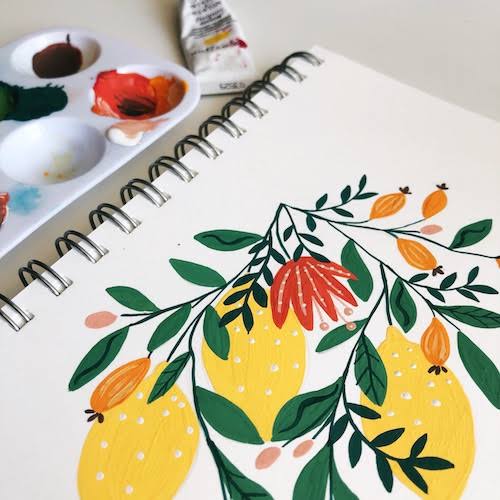
To offer you a quick overview, gouache (pronounced “gwash”) is a type of “opaque watercolour.” It usually consists of pigment, water, and a binding agent, which explains why it has a consistency and application similar to watercolour paint.
Gouache paints are popular with students and commercial artists alike, and it’ll be on most colleges’ requirement list. It’s quick-drying, bold, and doesn’t require any mediums.
You can use it straight from the tube or soften it with water for washes. But it won’t allow you to build up as many layers of wash as pure watercolour would. It is not waterproof when dry, unlike Acrylic.
It also has a matte finish with no light reflection, and it’s water-soluble. So it won’t cake onto your brushes and is simple to clean up. Gouache may be widely used in a variety of ways and with a variety of techniques. Thus, making it ideal for both beginning and professional painters.
What you’ll Need For Gouache Painting

Paints, brushes, a surface, water, and a mixing tray or palette are all you need to begin with gouache painting.
Brushes
As previously said, there is little difference between watercolour and gouache paints. Therefore you can use both if you just have watercolour brushes. Depending on how you want to utilise gouache, you can choose from a variety of natural or synthetic fibre brushes in a variety of sizes. When painting with gouache, keep your brush damp to make it easier to work with the paint.
Gouache Paint
You can work with a number of gouache paints, which are available from a variety of manufacturers. If you’re new to gouache paint, start by purchasing a few main colours, as well as black and white tubes to produce various hues and tones.
Surface
When it comes to working with gouache, there are a few different surfaces you can use. Watercolor paper is usually a good choice, and while canvas can be used acrylic or oil mediums will always perform better.
Mixing Palette
Gouache comes in a tube or a tray, so you’ll need a mixing palette. To generate a wide spectrum of colours, it’s always ideal to use a palette to mix your paints on.
Water
Working with gouache necessitates the use of water. Because only a small amount of pigment, needed for laying down your colours, you’ll need a new water pot to get the proper consistency.
Gouache Painting Techniques
Gouache is quite versatile and you can use it in a variety of ways. While gouache paint offers limitless creative possibilities, it’s helpful to know how to employ some of the most prevalent gouache painting techniques.
There are a few simple ways listed below that you can attempt, but there are lots more to explore. So don’t be afraid to try new things with your gouache paints. Experiment, play around, and see what you can come up with.
Splatters

Using gouache to create the illusion of stars or water spray on your artwork is a terrific way to begin. This technique is frequently used to add white gouache to watercolour galaxy paintings.
Dry brushing

The Dry brushing is a technique for incorporating texture into your work. Pick up some slightly wet gouache and use a paper towel to dry it out. After that, you can use the dry brush to add a wonderful feathery texture to your painting.
Layers
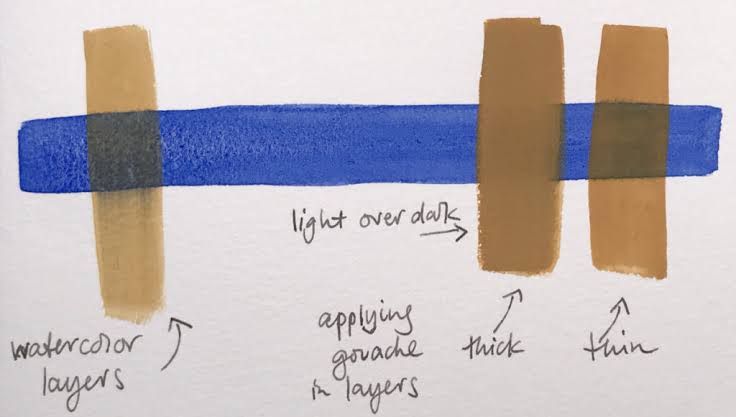
After you’ve laid down a foundation layer, you may start layering on top of it. Reduce the amount of water in the gouache to create a rich inferring that will cover any pencil outlines. This approach works best for minor details.
Staining

Many folks will begin by staining the surface they will be working on. This entails applying a layer of paint to the area as a ground foundation. Simply dilute your gouache paints with water to achieve a thin, watercolour-like consistency, then wash it over the page. This method works well for adding colour to big portions of a painting, such as skies or landscapes.
Colour blending

Blend colours directly on your surface for subtle or powerful colour shifts to create intriguing effects. Simply paint one colour onto your surface, then paint another colour onto the edges until they start to blend together and produce a smooth colour transition. Colors in gouache combine well, providing you an almost limitless pallet to work with.
Reactivating dried paint

Even years after being dry, with water you can reactivate you Gouache painting. This allows you to rework and design your painting and achieve unique results.
Final Thoughts
Are you considering trying gouache? The good news is that getting started with this widely used and versatile paint is simple. Of course, these are just a few of the gouache techniques you can employ to begin with. Experiment with the paint on scrap paper to gain a better grasp of the pigment’s properties.
We, at Podium School, hope that this guide has answered your questions and aided you in getting started with gouache! If you’re looking for some inspiration, check out our blog for more ideas on art and craft!
Don’t forget to catch our newest archive on The Best Motivational Speakers To Listen To!
Share with your friends
